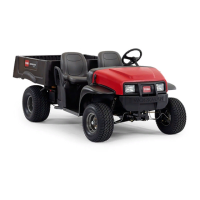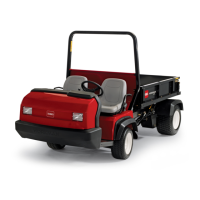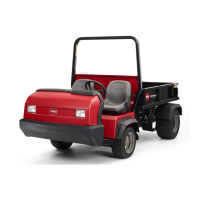T owing the Machine
In case of an emergency , you can tow the machine
for a short distance; however , this should not be a
standard operating procedure.
W ARNING
T owing at excessive speeds could cause a
loss of steering control, resulting in personal
injury .
Never tow the machine at faster than 8 km/h
(5 mph).
T owing the machine is a 2-person job. If you must
move the machine a considerable distance, transport
it on a truck or trailer; refer to T owing a T railer ( page
25 )
1. Remove the drive belt from the machine; refer to
Replacing the Drive Belt ( page 53 ) .
2. Af x a tow line to the tongue at the front of the
machine frame ( Figure 17 ).
3. Move the transmission to the N EUTRAL position
and disengage the parking brake.
T owing a T railer
The machine is capable of pulling trailers. A tow hitch
is available for the machine. Contact your Authorized
Service Dealer for details.
When hauling cargo or towing a trailer , do not
overload your machine or trailer . Overloading either
the machine or the trailer can cause poor performance
or damage to the brakes, axle, engine, transaxle,
steering, suspension, body structure, or tires.
Always load a trailer with 60% of the cargo weight in
the front of the trailer . This places approximately 10%
of the gross trailer weight (GTW) on the tow hitch of
the machine.
T o provide adequate braking and traction, always load
the cargo bed when using a trailer . Do not exceed
the GTW or GVW limits.
A void parking a machine with a trailer on a hill. If you
must park on a hill, engage the parking brake, and
chock the tires of the trailer .
25
